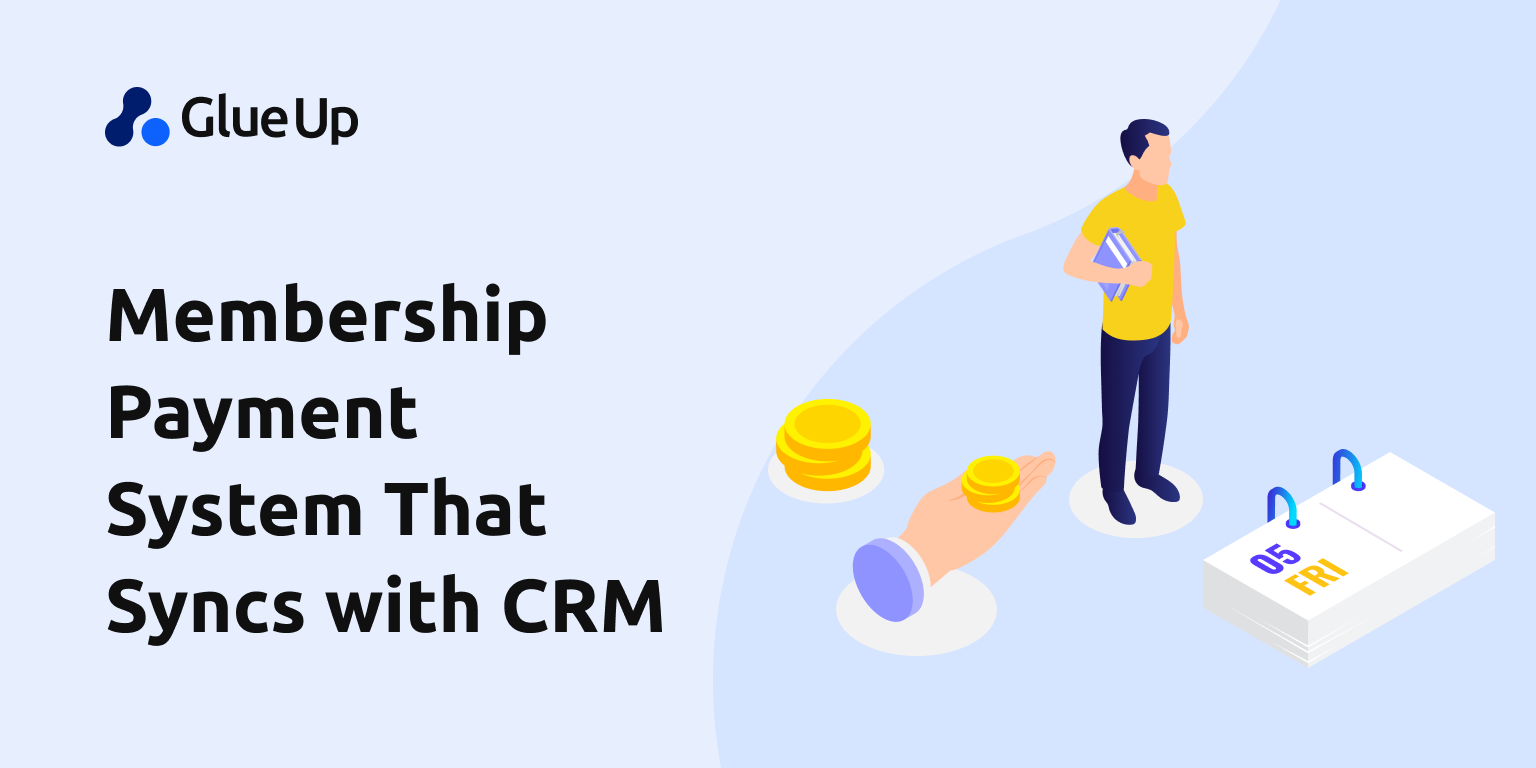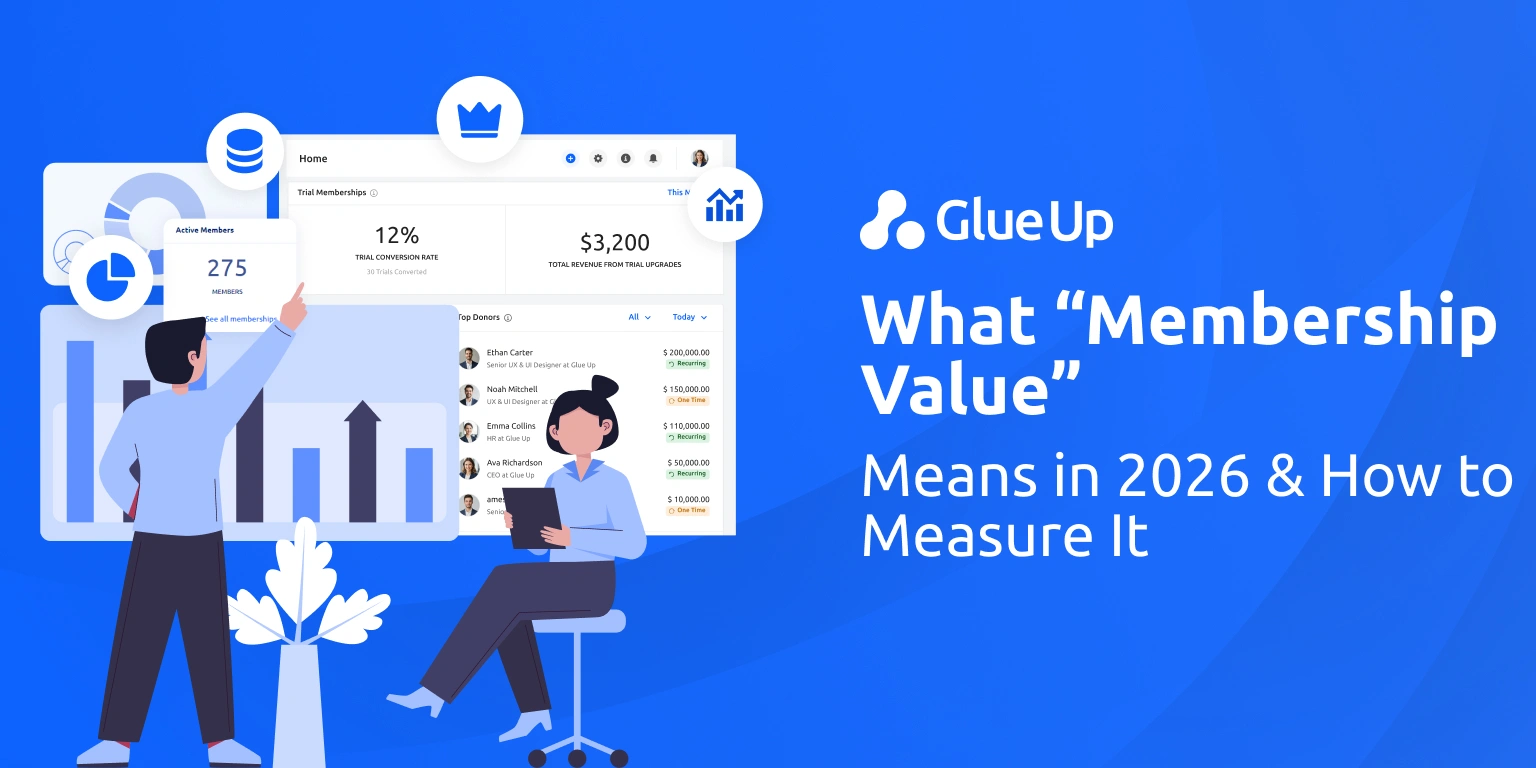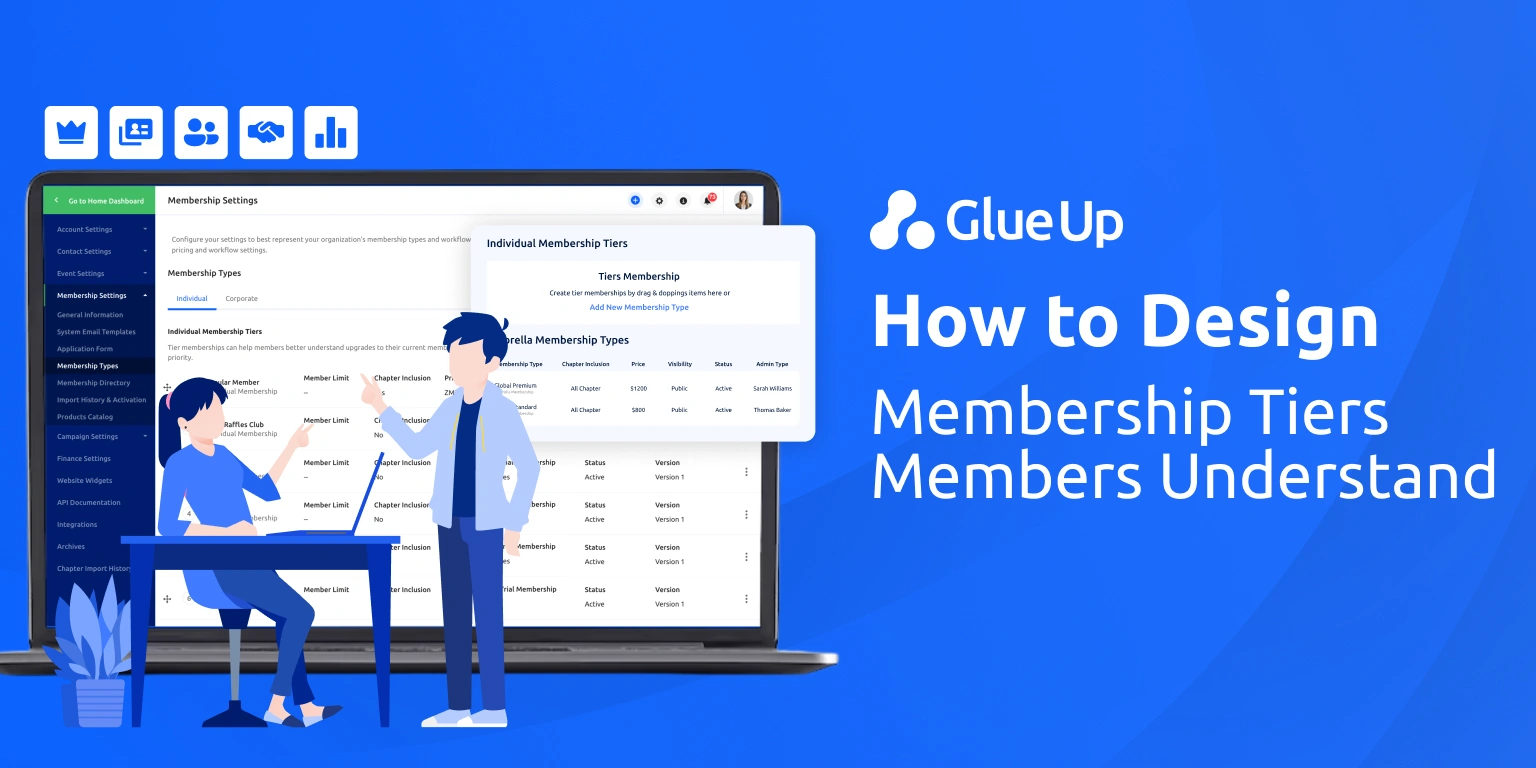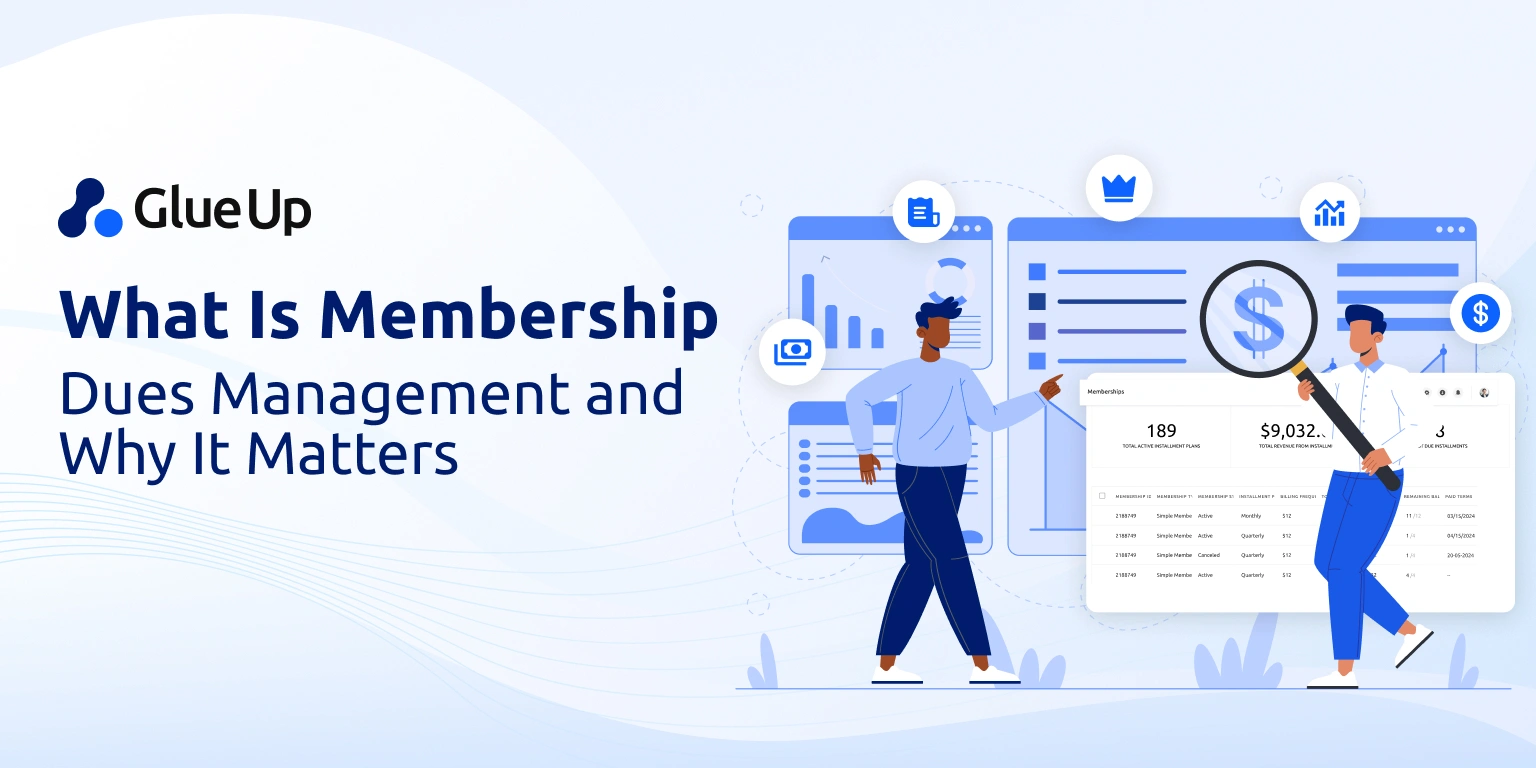
The membership payment system used to be simple. You charged annual fees, marked payments in a spreadsheet, and sent out receipts manually. That worked in a world where membership was a one-size-fits-all model.
Today, member organizations need more: recurring billing, tiered pricing, real-time data, and seamless automation. But here’s where most fall short—their payment system doesn’t talk to their CRM.
That disconnect breaks operations. It leaves leadership without visibility, staff juggling spreadsheets, and members receiving out-of-sync communications. For associations trying to scale, this isn’t just inefficient—it’s unsustainable.
This blog breaks down why syncing your membership payment system with your CRM isn’t just helpful. It’s strategic. And we’ll show you what to look for, how to implement it, and how it’s already working for organizations like yours.
Why Syncing Your Membership Payment System with Your CRM Matters
Let’s start with what happens when they’re not synced:
A member pays, but their status still shows as “lapsed.”
The finance team sends a receipt, but the events team isn’t notified to grant access.
A renewal reminder goes out to someone who has already paid.
Your annual revenue report doesn’t match your membership data.
None of these are technical bugs. They’re operational risks.
According to a 2023 study by Salesforce, 76% of organizations still report some degree of data fragmentation between departments. This means payment data lives in one place, member engagement data in another, and communication logs somewhere else entirely.
When payment and CRM systems are integrated, these silos collapse. Every payment becomes a data point tied to a real person, their history, and their future interactions with your organization.
What Is a Modern Membership Payment System?
Let’s define the terms clearly.
A membership payment system refers to the platform your organization uses to manage billing, collect dues, process payments, and track financial status for each member.
But a modern system does more than handle transactions. It needs to:
Automate renewals based on membership type or plan
Support tiered pricing, discount codes, and add-ons
Connect to your CRM, so member records update in real time
Allow self-service, so members can manage payments, invoices, and tax documentation themselves
Produce finance-ready reports, without waiting on manual exports
According to McKinsey, organizations that automate recurring billing and financial workflows see a 30–50% improvement in operational efficiency.
But without CRM syncing, automation only solves part of the problem. You’ll still need someone to double-check statuses, update contact fields, and fix errors across platforms.
What CRM Syncing Does
CRM syncing means that anytime a payment is made, your member database updates instantly—with no human touch required.
It’s not just syncing names and email addresses. A properly integrated system also syncs:
Membership status: Active, pending, lapsed, canceled
Payment metadata: Time of payment, method, amount, frequency
Behavioral data: Did the member renew early? Did they upgrade? How many reminders did it take?
Workflow triggers: Auto-send thank-you emails, unlock content access, notify account managers
For example, with Glue Up, every transaction instantly updates the member profile. This means your team can segment by payment history, trigger renewals, and even score engagement based on financial behavior.
What Happens When Payment and CRM Aren’t Synced
Here’s what we’ve seen from organizations still using disconnected systems:
1. Member Experience Breakdowns
Nothing frustrates members more than paying dues and getting a reminder the next day saying, “You’re overdue.” That friction isn’t just annoying—it hurts retention.
According to Forrester, 70% of consumers say connected experiences influence their loyalty. When systems are out of sync, members feel like you don’t know them.
2. Staff Inefficiency
Staff waste hours reconciling data across spreadsheets, exporting CSVs, re-importing into the CRM, and cleaning up duplicate entries. One membership director told us, “We spend more time managing software than managing members.”
Time that should go to strategy goes to spreadsheet wrangling.
3. Inaccurate Reporting
Disconnected systems lead to inaccurate financial forecasting, missed KPIs, and flawed board reports. If your CRM says you have 850 active members, but your payment system only shows 760 paid, which number do you trust?
The cost of uncertainty adds—fast.
What Features to Look for in a CRM-Synced Membership Payment System
Let’s talk specifics. If you’re evaluating solutions, here’s what to prioritize:
Real-Time Data Syncing
Changes should reflect instantly across systems—not batched nightly or weekly. Real-time syncing reduces member frustration and admin errors.
Payment Flexibility
One-time dues
Recurring billing (monthly, quarterly, annually)
Add-on purchases (events, sponsorships, certifications)
Discount codes, early bird pricing, and grace periods
Integrated Member Portal
Members should be able to log in, view their invoices, manage payment methods, and renew without calling support. This also reduces the staff workload.
Custom Workflows
Set up automations based on payment status:
Send renewal reminders at preset intervals
Flag high-value members for follow-up
Trigger event invitations post-payment
Multi-Currency and Local Tax Handling
If you’re international or regional, your payment system should support localized currency, tax requirements, and country-specific payment gateways.
Role-Based Access
Finance should see financial reports. Membership should see engagement. Events should see RSVP for revenue. Not everything should be visible to everyone.
How Glue up Brings CRM + Payment Syncing into One Membership Payment System
For associations and chambers managing thousands of member interactions, payment isn’t just about collecting dues—it’s a signal of engagement. Glue Up is designed to capture that signal and act on it instantly.
Unlike most generic billing tools, Glue Up’s membership payment system is fully built around the day-to-day realities of member organizations. It doesn't just process transactions—it transforms them into live, actionable data inside your CRM.
What Syncing Looks Like in Real Time
Here’s how the workflow plays out on Glue Up:
A member pays online through the portal or mobile app
Their status in the CRM is automatically updated to “active”
A receipt is generated and emailed instantly
A renewal tag is added to their contact profile
Finance dashboards reflect the transaction in real time
If the member is part of a corporate account, the group status is also updated
From payment to profile update to receipt of dispatch—the entire sync process completes in under 30 seconds.
Built for Real Membership Complexity
Glue Up’s payment system is equipped to handle the complexities most associations face, including:
Multiple billing models: individual, corporate, bundled tiers, or benefit-based pricing
Online + offline tracking: record bank transfers and in-person payments alongside card and mobile wallet transactions
Automated scoring: track patterns like late payments, early renewals, or lapses to prioritize retention efforts
Smart reporting: finance, membership, and leadership teams see tailored views of revenue performance, outstanding dues, and renewal pipelines
Asia-Based Chamber of Commerce
One of Glue Up’s regional chamber clients was facing two common challenges:
Manual reconciliation of payments across separate systems
Flatlining renewal rates due to inconsistent outreach
After moving to Glue Up’s all-in-one platform:
Manual reconciliation time dropped by 73%
Renewal rate increased by 48% in just six months
Targeted renewal campaigns became possible due to clean CRM tagging linked to payment data
Member satisfaction scores improved thanks to real-time confirmation and receipts
The result is fewer internal handoffs, faster decisions, and more confident forecasting.
Real-World Use Cases: Syncing in Action
1. Onboarding New Members
With syncing:
Member signs up and pays → CRM tags them as “new”
Auto-send welcome pack, event invites, and logins
Internal teams see a new member alert and can follow up
No more delays or “We didn’t know they joined” moments.
2. Renewals and Lapsed Members
When a renewal payment is missed:
The CRM flags them as at-risk
Auto-reminders go out based on your cadence
If they still don’t renew, a workflow triggers a personalized re-engagement campaign
No more sending generic renewal blasts to the entire list.
3. Event Attendance Linked to Dues Status
You can restrict access to paid members, track no-shows, and even measure ROI per attendee segment—all based on synced CRM profiles.
4. Board Reporting
Instead of pulling payment data from Stripe and member data from HubSpot, synced systems give you one dashboard with clean numbers. That saves hours of board prep each quarter.
How to Set Membership Payment System Up Without Headaches
Switching systems—or syncing new ones—can feel risky. But with the right process, it’s manageable.
Step 1: Map Your Current Workflows
What happens from the moment someone joins the moment they renew? Write it out. Identify where manual steps are slowing you down.
Step 2: Audit Your Tools
Is your CRM and payment system even compatible? Look for open APIs, native integrations, or unified platforms like Glue Up.
Step 3: Start with a Test Segment
Migrate one member type or one region first. Monitor how the syncing behaves—what automations fire, how reporting improves.
Step 4: Train Your Team
Make sure everyone understands how the new system affects their day-to-day life. Show them how syncing saves time, reduces errors, and helps them look good in front of the leadership.
Step 5: Set KPIs
Track:
Time saved per workflow
Renewal rate changes
Member satisfaction scores
Support tickets related to billing
Forecasting accuracy
Key Metrics to Monitor Post-integration
If your membership payment system is truly syncing with your CRM, you should see improvement in:
Metric | What it tells you |
Time to renew | How fast members act after receiving notice |
Payment failure rate | Indicator of payment friction |
Dues-related support tickets | Drops when systems work properly |
Lapsed member recovery rate | Improved by targeted, automated outreach |
Revenue predictability | Enhanced with clean CRM-linked payment data |
Common Objections, and Why They Don’t Hold Up
“We already have a payment system that works.”
It works—for finance. But does it support engagement, automation, and strategy? Does it sync data instantly? Can you scale with it?
“We don’t have the budget.”
A disconnected system is more expensive long term. The cost of staff time, member churn, and poor forecasting adds up fast.
“It’s too complex to migrate.”
That’s what every org says—until they do it. Glue Up and similar platforms offer onboarding support, data migration, and white-glove service to make it easier.
Syncing Is an Infrastructure
Choosing a membership payment system that syncs with your CRM isn’t just about getting your tools to work together. It’s about building an organization that works smarter.
Your members notice when things feel easy. Your team performs better when systems don’t create extra work. And your leadership makes sharper decisions when data is trustworthy and timely.
Whether you use Glue Up or another solution, the goal is the same: Don’t just collect payments—connect them to purpose, people, and progress.



